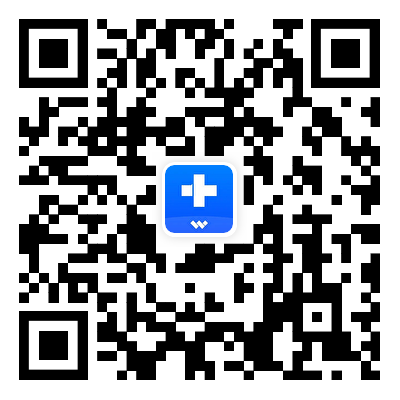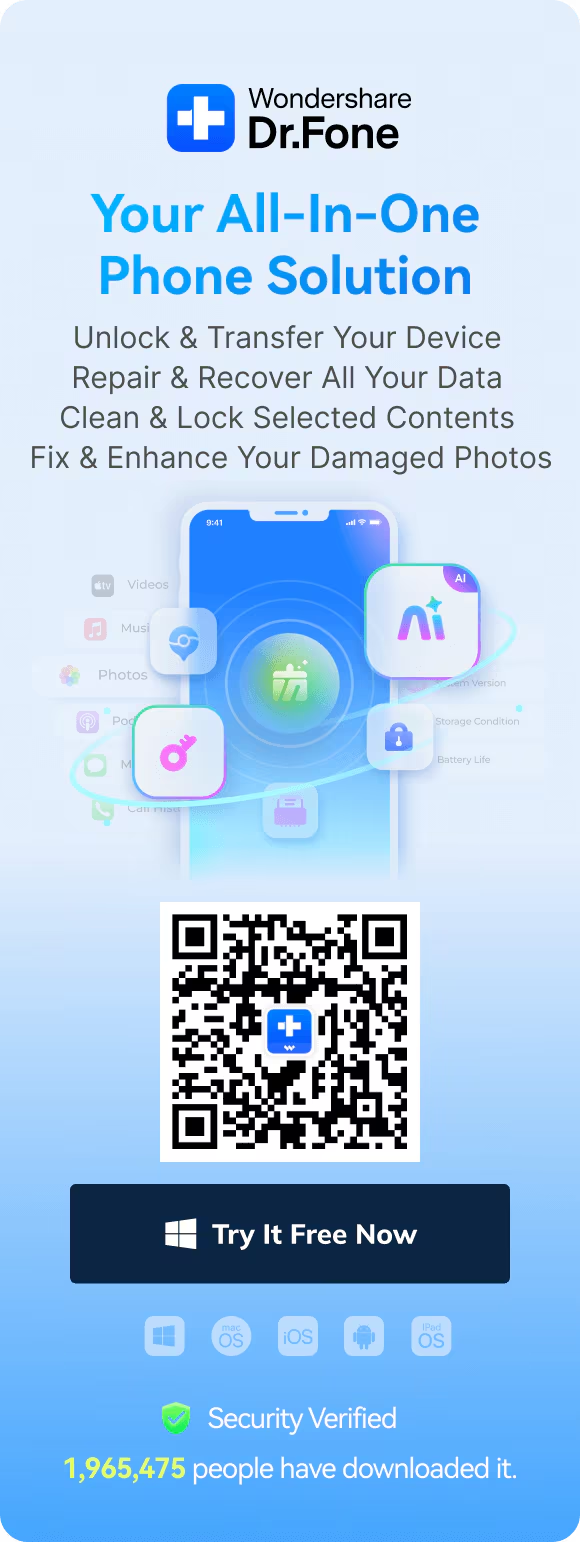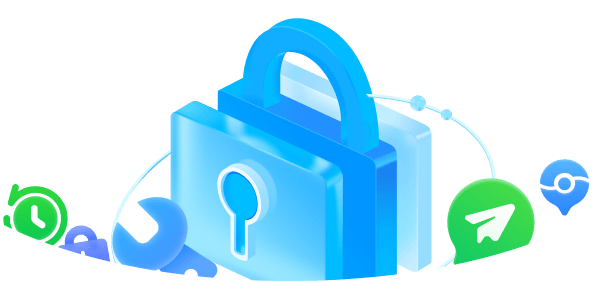In today's digital age, secure communication and data protection are key. We must protect sensitive info in emails. Data breaches and cyberattacks are rising threats. That is why awareness on how to encrypt emails is a top priority.
Email encryption plays a vital role in protecting your communications. Encryption converts email content and attachments into unreadable code. This ensures that only the intended recipient can access the information. It protects it from unauthorized access and misuse.
For iPhone users, apps like Dr.Fone - App Lock (iOS) add security. They protect your apps and sensitive messages. This solution keeps your private emails and attachments safe on shared devices.
In this article
Part 1: What Is Email Encryption and Why Is It Important?
Email encryption converts email content and attachments into unreadable code. This protects sensitive information during transmission. It ensures that only the intended recipient can access the email. They must have the correct decryption key.
Encryption uses algorithms to scramble email data. This makes it unreadable to unauthorized users. When the recipient gets the email, their decryption key reverses the process. It restores the content to its original form.

The benefits of encrypting emails include:
- Protecting sensitive information: Encryption stops data breaches and keeps private messages confidential.
- Preventing unauthorized access: It stops hackers and others from reading the email.
- Compliance with privacy laws: Many industries must use encrypted communication to meet regulations like GDPR and HIPAA.
Encrypting your emails secures your communications. It shows you care about data protection.
Part 2: How to Encrypt Emails on Popular Platforms
Encrypting your emails is easier than you think. Popular platforms like Outlook 365 and Gmail have built-in features for this. Here are step-by-step guides on how to encrypt email in outlook 365 and how do you encrypt an email in gmail
How to Encrypt Emails
A. Encrypting Emails in Outlook 365
- Open Outlook 365 and compose a new email.
- Navigate to the Options tab in the toolbar and click on Encrypt.
- Choose an encryption option, such as Encrypt-Only or other available options based on your needs.
- Add the recipients, type your message, and attach any files.
- Click Send to deliver your encrypted email securely.
A. Encrypting Emails in Outlook 365
- Open Outlook 365 and compose a new email.
- Navigate to the Options tab in the toolbar and click on Encrypt.
- Choose an encryption option, such as Encrypt-Only or other available options based on your needs.
- Add the recipients, type your message, and attach any files.
- Click Send to deliver your encrypted email securely.

B. Encrypting Emails in Gmail
- Open Gmail and click on Compose to start a new email.
- In the email toolbar, click the lock icon to enable Confidential Mode.
- Set a passcode and expiration date for the email to add extra layers of security.
- Attach any necessary files, ensuring they comply with the encryption settings.
- Click Send, and Gmail will handle the secure transmission of your email.

How to Open an Encrypted Email
Encrypted emails ensure secure communication. But, accessing them requires steps that vary by platform. Here's how do you open an encrypted email in Outlook and Gmail.
A. In Outlook
- Open the encrypted email in your Outlook inbox.
- Follow the on-screen prompt to decrypt the email, which may require signing in with your Microsoft account.
- Once authenticated, the email's content will be visible.

B. In Gmail
- Open the encrypted email in your Gmail inbox.
- If required, use the passcode provided via text or email to unlock the message.
- After entering the passcode, you can view the email securely.

Troubleshooting Common Issues
- Forgotten Passcode: Contact the sender to request a new passcode.
- Platform Compatibility: Ensure you're using a compatible app or browser to open encrypted emails.
- Login Issues: Verify that you're using the correct account credentials associated with the email.
By following these steps, you can learn how to encrypt email attachment on popular platforms and securely open encrypted messages with ease.
Part 3: How to Encrypt Email Attachments for Secure Sharing
Knowing how to securely send documents via email is vital. It keeps sensitive information safe when sharing. Encrypting an email protects its content. But, separately encrypting attachments adds extra protection. It safeguards your data if the email is intercepted.
Why Encrypting Attachments Matters
Encrypting attachments ensures:
- Confidentiality: Prevents unauthorized access to sensitive files, even if the email is compromised.
- Compliance: Helps meet legal and regulatory requirements for secure file sharing.
- Data Integrity: Protects attachments from tampering during transmission.
For Outlook Users
Step 1: Compress and Encrypt Files
Use tools like WinRAR or 7-Zip to compress your files into a password-protected .zip or .rar format. Create a strong password to secure the compressed file.
Step 2: Share the Password Securely:
Send the password via a separate, secure communication channel like a text message or phone call.
Step 3: Leverage Built-in Encryption:
Use Outlook's built-in email encryption options or integrate encrypted file-sharing tools like OneDrive to enhance file security during sharing.

For Gmail Users
Step 1: Compress and Encrypt Files:
Follow the sam``1. e process as outlined above to compress and password-protect your attachments using tools like WinRAR or 7-Zip.
Step 2: Securely Share the Password:
Use a different communication platform to share the password with the recipient.
Step 3: Utilize Confidential Mode or Google Drive:
Enable Confidential Mode in Gmail to restrict access to the email and its attachments. Alternatively, use Google Drive's encrypted sharing options to send files securely.

Encrypting your attachments with your email. It is a strong way to secure communication. Knowing how to send documents securely via email protects your sensitive info from unauthorized access.
Part 4: Securing Email Apps with Dr.Fone - App Lock (iOS)
To further secure your email, you must secure your email apps. Dr.Fone - App Lock (iOS) protects apps like Outlook and Gmail. It keeps your sensitive data private.
Features of Dr.Fone - App Lock (iOS)
Dr.Fone - App Lock (iOS) offers powerful tools to secure your email apps and other applications. With easy-to-use features, it ensures that only you have access to sensitive information on your iPhone.
- Secure Email Apps: Lock email apps like Outlook and Gmail to protect your communications.
- App Grouping: Group email apps for better organization and easy access control.
- Location-Based Restrictions: Use Restrict Zone to lock apps based on your physical location.
- Time-Based Restrictions: Lock apps during specific hours with Restrict Time.
- Advanced Security Options: Set up Face ID or a PIN code for secure, seamless app access.
Dr.Fone App - App Lock (iOS)
Enhanced App Security: Lock/Hide Apps Based on Time and Location
- Lock apps to prevent accidental deletions or downloads.
- Hide apps from the home screen for enhanced privacy.
- Face ID/PIN code protection for secure access.
- Supports iOS 16 and above.
Step-by-Step Guide for Dr.Fone - App Lock (iOS)
Dr.Fone - App Lock (iOS) allows you to easily lock your apps and secure sensitive data. Here's a simple guide to get started:
01of 04Launch the App Lock Tool
Open Dr.Fone and select the App Lock feature from the main menu.

02of 04Add and Organize App Groups
Create groups for apps like Outlook and Gmail for better organization and control.

03of 04Configure Locked or Private Modes
Enable locked or private modes to restrict unauthorized access to specific apps.

04of 04Set Up Face ID or PIN Code
Activate Face ID, Touch ID, or a secure PIN code for enhanced security when accessing apps.

By following these simple steps, you can maximize the security of your email apps and keep your personal data safe.
Tips for Maximizing Security with Dr.Fone - App Lock (iOS)
- Use Restrict Zone: Lock apps automatically based on your geographic location, such as at work or in public spaces.
- Set Restrict Time: Schedule app locks during specific periods, like working hours or overnight.
- Review App Groups Regularly: Keep your app groups updated to maintain optimal security management.

By utilizing Dr.Fone - App Lock (iOS), you can secure your email apps effectively and ensure your communications and sensitive data remain safe.
Conclusion
In today's digital world, we must know how to encrypt emails attachments. This is vital for secure communication and protecting sensitive information. Encrypting emails protects your messages and attachments from unauthorized access. It reduces the risk of data breaches.
Dr.Fone - App Lock (iOS) adds an extra layer of security by allowing you to lock your email apps on your iPhone, ensuring that only authorized users can access your sensitive communications. Together, email encryption and Dr.Fone's app locking features provide a comprehensive approach to secure your data, giving you peace of mind in an increasingly connected world.
FAQ
-
Q: How can I securely encrypt emails in Gmail?
A: To securely encrypt emails in Gmail, you can use the Confidential Mode, which allows you to set a passcode and expiration date for your email. Using it with Dr.Fone - App Lock (iOS) locks your email app with advanced security features like Face ID or a PIN. This adds extra protection.
-
Q: What are the best ways to protect email attachments?
A: You can compress and password-protect attachments using tools like WinRAR or 7-Zip. Also, use Dr.Fone - App Lock (iOS) to lock your email apps. It adds security by ensuring only authorized users can access those attachments on your device.
-
Q: How can I improve email app security on my iPhone?
A: : For enhanced security of your email apps like Outlook or Gmail, consider using Dr.Fone - App Lock (iOS). It allows you to lock your email apps with Face ID, a PIN, or even location- and time-based restrictions.



























Selena Lee
staff Editor
Generally rated4.5(105participated)